
Mats Selen, Professor of Physics
Mats Selen– Changing the Way Physics is Taught
October 8, 2013
"Well I have to confess, I was always in the closet about teaching. I did all my research, but I secretly always loved teaching as much as I did research, probably more…so suddenly, if they could be the same things, what could be better?" – Mats Selen, Physics Professor
Mats Selen loves teaching physics, and he's not ashamed to admit it. After 20 years doing particle physics research, which he found to be both exciting and rewarding, when a successful experiment of his ended, he figured, "This might not be a bad time to switch what I am doing. So I thought to turn over a new leaf and come out of the closet and be a real-life teacher all the way around."
And Mats Selen's foray into the teaching of physics has definitely changed the face of Physics education at Illinois. For one thing, the hallowed halls of Loomis Lab are noisier than ever, thanks to Mats Selen.
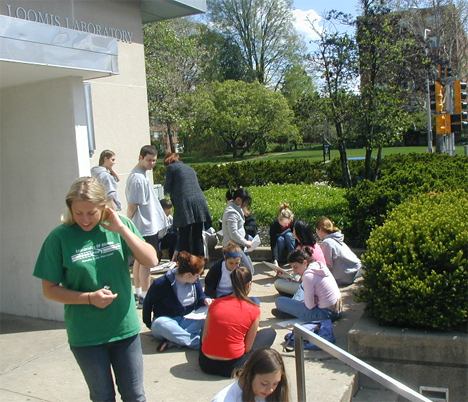
Students from the first Physics 123 course gather outside Loomis Lab for an activity (photo courtesy of Mats Selen).
Ever since he developed Physics 123, a course on the rudimentary principles of physics for education students, an influx of excited, boisterous, female education students making the pilgrimage north of Green Street has challenged the status quo of the previously male-dominated physics building.
However, Selen says the idea for Physics 123 wasn't his: "I think Inga was behind this." It seems that a friend was teaching science methods to elementary education students who didn't appear to know any science, so the instructor had to teach basic science before addressing teaching methods. The College of Education appealed to Physics for help, so—Mats to the rescue—he developed the course. Selen shares an anecdote about the first semester the course was offered.
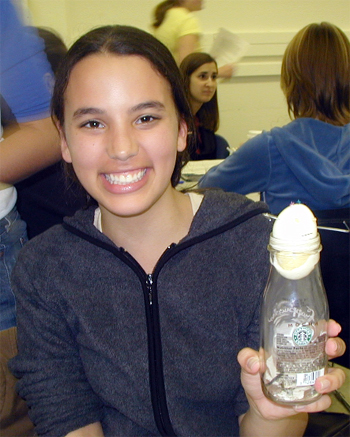
Student from the first Physics 123 course proudly displays her handiwork from a hands-on project (photo courtesy of Mats Selen).
"The physics building was suddenly full of young women," he reminisces. Physics students walking by (predominately male) couldn't help but notice and were asking "What's going on here?"
They evidently figured it out, because the next semester, a bunch of physics guys were taking the course. When Mats would ask, "Dude, what you are doing in this class?" their response was: "Oh, I think I want to teach."
Not born yesterday, Mats knew their real motivation: "I couldn't really kick them out," he confesses, "but I knew they wanted to meet girls." Before the next semester, the department changed the rules to give preference to elementary ed students.
After "the little hiccup," as Mats calls it, the course has been a great success and livens up the building.
"It brightens your whole day," he admits. "You go out in the hall and you see…it's very hands-on, very active materials that they work on. Sometimes, they're out in the hall doing things: putting each other on skateboards or dropping things down the stairwell. They are not quiet at all; there's a bunch of them giggling and laughing. It's so different than normal business hours in Physics, and it brightens up the whole place; it's wonderful."
Though Selen doesn't teach the course any more, it's still quite popular. Does he begrudge the success others are having teaching the course without him? Quite the opposite. "This is a sign of a good course, if other people can teach it. If it depends on one person, then it will ultimately fail. The material we created—anybody can use."
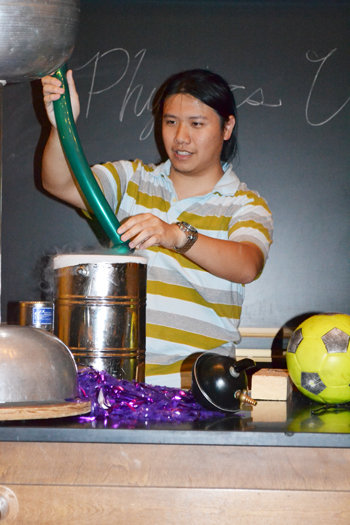
Physics Van student leader Conan Huang does a demo during the fall 2013 training session for volunteers.
Loomis Lab isn't the only place that has changed as a result of Mats Selen's influence. Local schools are also a lot noisier as Physics Van students do their best to show youngsters that physics is fun. With its unique brand of physics-related slapstick, the program helps elementary teachers augment lessons by taking physics principles off the page of the textbook and acting them out in the real world.
Regarding starting up the Physics Van, Selen self-deprecatingly says, "Well, it wasn't my idea at all." He indicates somebody heard that Purdue had a "Physics Van-like thing" and said, "Wouldn't it be cool if we had something like that here?" Because he was "the youngest faculty at the time, they said, 'Hey you, what do you think about doing something like this?' and I went, 'Sounds like a great idea!' What else could I do?"
He goes on to give the credit to Inga: "I wouldn't be surprised if it was all Inga, because she's really behind all good things that happen in our department, because she really has her ear to the ground." (Ironically, Inga and Mats not only seem to have a mutual admiration society; neither will take the credit for anything: "I just asked Mats if he wanted to do it. That's all I did," says Karliner. She also reports that the original inspiration for the Van came from Physics Department Head David Campbell.)
So they invited Purdue's physics van to do a presentation at Leal Elementary School. After the event, says Selen, "We were like, 'Well, we could do that!...We could do it even better!'" So they did. The improvement? Instead of an academic professional doing presentations, "We thought, 'Well, it'd be better if we just had our own students doing it!'" says Selen.
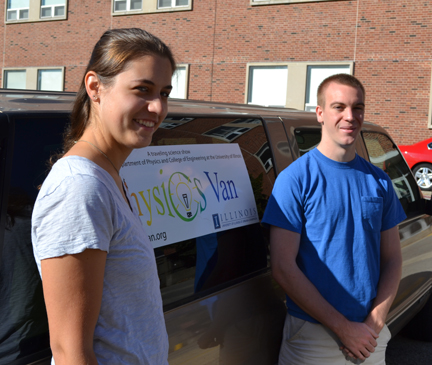
Scott Ludke and Katrina Litke, the 2013 co-leaders, pose by the Physics Van.
Although he is still the faculty advisor, Selen says Physics Van pretty much runs without him. About the only thing he does is a cookout for the students, or to critique new demos they want to add to the show. He credits the students who run it with the program's success:
"It only works, and it's only wonderful, because the students that are doing it are so great."
Has he ever had any sleepless nights over the Van? Selen says that in its early days, he used to be concerned about how to keep it going:
"My biggest worry, from the very first semester, was "How am I ever going to get these wonderful people or anything like them again?" he says. "But every single year, there's wonderful kids to replace the ones that graduate…So, I don't worry about it just stopping anymore. I used to worry about that a lot…because I figured we just got lucky. But, now we've gotten lucky 20 years in a row, so it can't just be luck."
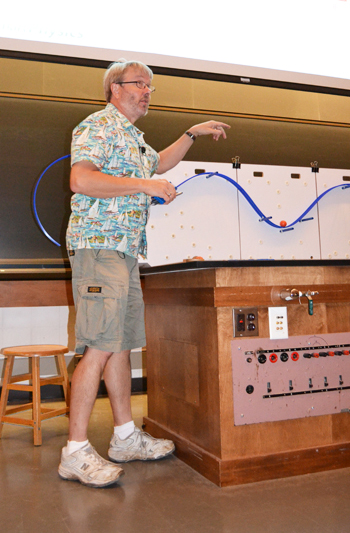
Mats Selen demonstrates inertia during a Physics 211 lecture.
Not only does he no longer lose sleep worrying; besides being a glowing ambassador for Physics, the Van's success and longevity has actually altered Mat's perception of the human race: "So, it's really bolstered my whole faith in humanity. That you…just always have enough people to do the right thing and make it work."
Now, if you're looking for someone to drop stuff out of a window to test the theory of gravity, Selen's your guy. That's how he became the WhysGuy on WCIA's Morning Show. "It was just on a lark," Selen says of the part comedy routine/part physics demonstration that began his tv career. It turns out that around 2000, one of the morning guys at Channel 3 wanted to commemorate Galileo's birthday by going to the top of a tall building and throwing things out of the window, ostensibly to reinforce the scientist's discoveries about gravity. Figuring the "mad scientist" route would be much funnier, he decided to involve a crazy physics professor, and somehow Mats' name cropped up.
So the two of them went to the Fire Institute building in town where firefighters train ("There's nothing on the ground that can get hurt by you throwing crap," explains Mats), and threw things out the window. Evidently, it turned out to be pretty funny, because Mats has been doing the show ever since. Mats has enjoyed it because he gets to "just do science…and they let me do whatever I want." The station has enjoyed the ratings. The show's appeal? "Probably 'cause the other stuff they had in the morning was…lame," admits Mats, "and people liked seeing stuff that was kind of fun in science—especially if something blows up."
Another thing about physics education that has changed since Selen showed up: students don't raise their hands to frantically signal "I know! I know!" or answer vocally quite as much. Instead, they enter lectures armed with an i>clicker, an electronic device that lets the whole class respond simultaneously.

i>clickers (photo courtesy of http://www1.iclicker.com/)
When asked about the i>clicker, Selen responds, "Oh, that," then goes on to admit, "We built that here." According to Selen, colleague Tim Steltzer, who also teaches big intro classes, wanted a classroom system where students could respond to questions by voting, choosing a, b, c, or d. After rejecting some ineffective, expensive systems, Steltzer asked Mats, "Couldn't you build something like this?" So Selen (whose research at that time was particle physics and building electronics) and a student hunkered down over the summer and came up with something that "kind of" worked.
"Tim pushed and pushed," acknowledges Selen. "I would have been happy with: 'This kind of works.'" Other folks got interested in the project: a colleague, Gary Gladding, and Benny Brown, a grad student with a background in electronics, who helped work out some of the kinks. They ended up selling the idea to a company called Holtzsbrink (now known as Macmillan). i>clicker is now used not only at Illinois, but in thousands of classrooms across America.
Another thing Mats has changed in physics instruction? Like Santa Claus, who knows if you've been naughty or nice and checks his list—or rather, more like 1984's Big Brother, looking over your shoulder—the three amigos (Selen, Steltzer, and Gladding) developed another physics instructional tool, a web-based physics course that allows the professor to track what students do before and after class: smartPhysics.
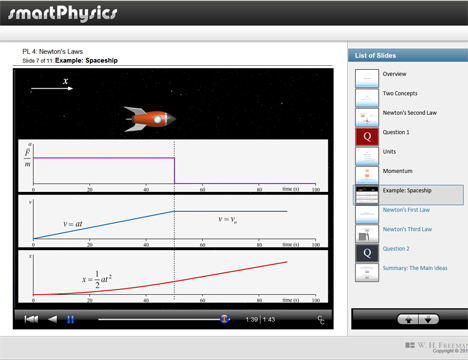
Example of a smartPhysics prelecture explaining Newton's Law of Momentum.
First, they tossed out the textbook and replaced it with narrated animations called pre-lectures. According to Selen, cognitive phycology research says, "You can get the same amount of information into someone's brain with less stress if you use both visual and auditory senses." smartPhysics, also used all over the country, allows Mats and other instructors to figure out what students do and don't understand based on their homework and responses to pre-lectures, then adjust instruction accordingly, a pedagogy called "Just-in-Time" teaching. The framework, byteShelf, supports web exercises for students and also allows instructors to grade students’ homework. Selen and company are adapting the framework to make it available for other disciplines. Says Selen: “This isn’t just for physics anymore.”
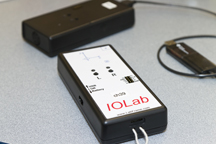
IOLab
Another gadget Selen and Steltzer are working on to change physics education is called IOLab (Interactive Online Labs). Armed with a wireless gadget that does all kinds of measurements, such as acceleration, magnetic field, etc., students can do the interactive online labs anyplace—even in their dorm room—by simply plugging it into their computer. "In other words," says Selen, "they have a hands-on experience before even coming to class." This frees up time during traditional physics labs to try different things. "Anything you can do to improve learning while keeping kids out of the classroom for some of the stuff would be a good thing."
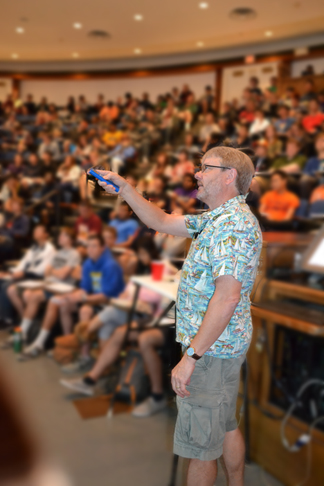
Mats Selen during a Physics 211 lecture in fall 2013.
Selen's philosophy of education and teaching is simple. Two principles: "give them all the tools that you can" and be "willing to work as hard as they are," he's definitely lived up to. Treating students well is also important to him: "Students respond well when you treat them like grownups, have expectations of them, and be fair with them…if you really enjoy teaching and try hard to make their experience good, then they'll appreciate it."
His goal is to help students be successful: "My philosophy, I guess, would be to make a system where a student who works really, really hard can succeed." And part of that involves helping students discover their strengths. He shares an anecdote about his own journey of discovery:
"There are certain things you're good at. I'm really bad at memorizing. When I went to college, actually, I wanted to be a veterinarian; that was my plan. And I realized very quickly that I couldn't be one. It was hopeless, because I couldn't memorize stuff. I did horribly in Zoology 101. So I was almost relegated to physics, because I don't have to memorize stuff in physics. I think the best we can do, since students are here to figure out what they're good at and what they're not good at, is to give them the tools to figure that out."
His final tidbit regarding his philosophy of teaching? Make it palatable. "You shouldn't look back on your physics experience and think, 'Well, that stunk.'…If my students think the course stinks, then I have failed."
Selen is particularly grateful for the freedom he's had at Illinois to be himself and to try new things, and to his Department and College, who've "put up with all this craziness." He points to the Physics Van and Physics 123 as good examples of projects which, in hindsight, have turned out well, but might have been considered a gamble. "But the fact that we have the ability to take risk, and it might have not worked out, and been a waste of a semester they gave me to develop it—they were willing to risk that, and I have to hand it to them for having that attitude."
Regarding the University, Selen, not one to mince words, voices what many of us who live in its shadow have thought but been reluctant to express: we're not here for the scenery.
"Illinois is a special place. You're not here for the mountains; you're here because it's a great place. There are really good people that get great job offers and can go anywhere, but they choose to stay here. It isn't for the mountains or the sea; it's because this place is great."
And Mats Selen is one of the people who help make it so.
Story and photographs by Elizabeth Innes, Communications Specialist, I-STEM Education Initiative.
More: Faculty Feature, Physics,
Undergrad Education Reform, 2013
For more on the Physics Van, see the I-STEM article, Physics Van: A Whole Lot of Fun…Plus, You Get to Blow Stuff Up.

Mats Selen demonstrates a smartPhysics prelecture on his right monitor.













.jpg)
















